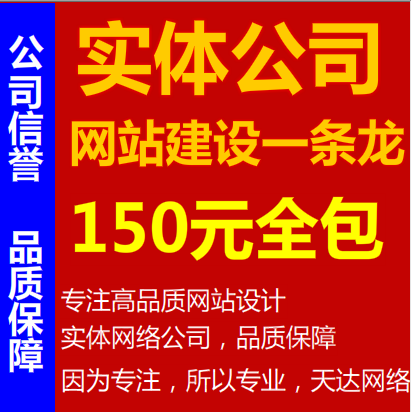Javascript:scrollWidth,clientWidth,offsetWidth的差异【转】
日期:2014-05-16 浏览次数:20527 次
网页可见区域宽:document.body.clientWidth;??
网页可见区域高:document.body.clientHeight;??
网页可见区域高:document.body.offsetWeight:??
网页可见区域高:document.body.offsetHeight;??
网页正文全文宽:document.body.scrollWidth;??
网页正文全文高:document.body.scrollHeight;??
网页被卷去的高:document.body.scrollTop;??
网页被卷去的左:document.body.scrollLeft;??
网页正文部分上:window.screenTop;??
网页正文部分左:window.screenLeft;??
屏幕分辨率的高:window.screen.height;??
屏幕分辨率的宽:window.screen.width;??
屏幕可用工作区高度:window.screen.availHeight;??
屏幕可用工作区宽度:window.screen.availWidth;
scrollWidth
是对象的实际内容的宽,不包边线宽度,会随对象中内容的多少改变(内容多了可能会改变对象的实际宽度)
clientWidth
是对象可见的宽度,不包滚动条等边线,会随窗口的显示大小改变。
offsetWidth
是对象的可见宽度,包滚动条等边线,会随窗口的显示大小改变。
------------------------------------------------
一个scrollWidth和clientWidth的例子:
<html>
<head>
<title>77.htm文件</title>
</head>
<body>
<textarea wrap="off"
onfocus="alert('scrollWidth:'+this.scrollWidth+'\n
clientWidth:'+this.clientWidth);"></textarea>
</body>
</html>
在文本框内输入内容,当横向滚动条没出来前scrollWidth和clientWidth的值是一样的。
当一行内容超出文本框的宽度,就有横向滚动条出来了,scrollWidth的值就变了。
scrollWidth是对象实际内容的宽度。
clientWidth是对象看到的宽度(不含边线),这个例子里不会改变。
-----------------------------------------------
一个clientWidth和offsetWidth的例子:
<html>
<head>
<title>77.htm文件</title>
</head>
<body>
<textarea wrap="off"
onfocus="alert('offsetWidth:'+this.offsetWidth+'\n
clientWidth:'+this.clientWidth);"></textarea>
</body>
</html>
offsetWidth的值总是比clientWidth的值打
clientWidth是对象看到的宽度(不含边线)
offsetWidth是对象看到的宽度(含边线,如滚动条的占用的宽)
top、postop、scrolltop、scrollHeight、offsetHeight
1. top
此属性仅仅在对象的定位(position)属性被设置时可用。否则,此属性设置会被忽略。
<div style="background-color:red; position:absolute; width:100px; height:100px;">
<p style="background-color:silver; position:absolute; top:-5px;">测试top</p>
</div>
上面是一个段落P包含在一个DIV内,可以看到P的top设置为-5px后,它的上边距超过了容器DIV的上边距,超过的这段距离就是设置的5px。
需要注意的是,DIV和P这一对包含元素,都需要设置position为absolute才能得到想要的结果,假如父元素不设置,则子元素的参照将是更上层定义过position的元素,直到整个文档;
2. posTop
posTop的数值其实和top是一样的,但区别在于,top固定了元素单位为px,而posTop只是一个数值(这一点可以通过
alert("top="+id.style.top)和alert("posTop="+id.style.posTop)来证明),因此一般使用
posTop来进行运算。
<div style="background-color:red; position:absolute; width:100px; height:100px;">
<p id="test" style="background-color:silver; position:absolute;">测试posTop</p>
</div>
<script>
test.style.posTop = 15+8;
alert("top="+test.style.top);
alert("posTop="+test.style.posTop);
</script>
无论你使用top或posTop来赋值,最后的结果都是一致的
3. scrollTop
<div id="container" style="background-color:silver; width:100px; height:100px; overflow:auto;">
<p style="background-color:red;">
别再做情人 做只猫 做只狗 不做情人 做只宠物至少可爱迷人 和你相交不浅无谓明日会被你憎</p>
</div>
<script>
container.scrollTop = 12;
</script>
这一段文本在这个100*100的DIV内无法完全显示,所以设置了overflow为auto,它会出现一个上下方向的滑动框,假如没有设置
id.scrollTop属性的话,默认情况下滑块位置在顶端。而设置了scrollTop值为12后,滑块的位置改变了,默认显示是卷过了12个象素的
文本。如果设置overflow为hidden,则将会无法显示顶部12个象素的文本。
注意设置方式是id.scrollTop,而不是id.style.scrollTop。
4. scrollHeight 与 offsetHeight
offsetHeight是自身元素的高度,scrollHeight是 自身元素的高度+隐藏元素的高度。
<div id="container" style="background-color:silver; width:100px; height:100px; overflow:auto;">
<p style="background-color:red; height:250px; ">
别再做情人 做只猫 做只狗 不做情人 做只宠物至少可爱迷人 和你相交不浅无谓明日会被你憎</p>
</div>
<script>
